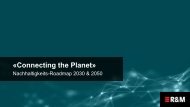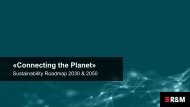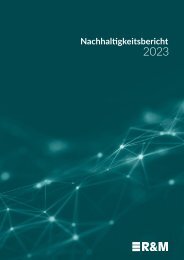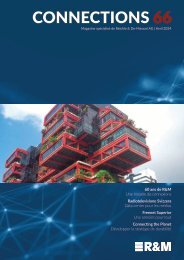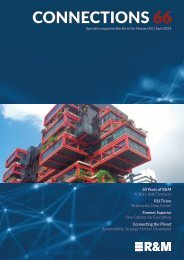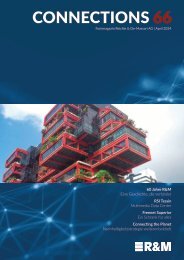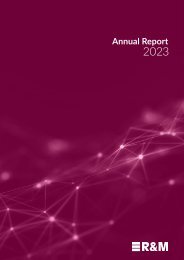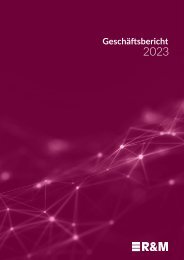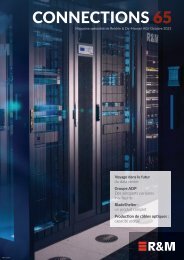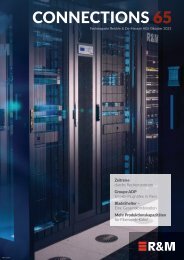CONNECTIONS_65-e
Specialist magazine CONNECTIONS no. 65
Specialist magazine CONNECTIONS no. 65
You also want an ePaper? Increase the reach of your titles
YUMPU automatically turns print PDFs into web optimized ePapers that Google loves.
Trends<br />
Liquid Cooling:<br />
Worth Considering<br />
050.7379<br />
Can liquids cool data centers a thousand times more efficiently than air? Or is this<br />
just an exaggerated, general advertising statement from innovative manufacturers?<br />
The range is probably between 50 and 1,000 times more efficient. This article<br />
focuses on what data center providers should consider before investing.<br />
Data centers are increasingly compacting<br />
performance in computer rooms. Servers,<br />
switches and microelectronics are becoming<br />
ever more tightly packed. As processing<br />
power increases, so does the operating<br />
temperature in the racks.<br />
This is why heat dissipation management is<br />
given top priority. Cooling with liquids is basically<br />
much more efficient than conventional<br />
cooling with air. Due to their heat capacity<br />
and density, liquids dissipate heat around<br />
1,000 times more efficiently than air.<br />
Smaller PUE value feasible<br />
Air cooling is established and widespread.<br />
In a conventional computer room layout,<br />
cool air from the cold aisle is blown through<br />
the racks into the hot aisle where the air is<br />
collected. Ventilation ducts and blowers lead<br />
it to cooling units or other heat dissipation<br />
systems.<br />
This classic configuration is no longer<br />
sufficient today. In addition, it is becoming<br />
practically impossible to achieve a PUE (Power<br />
Usage Efficiency) value that meets climate<br />
targets. Operators must find new ways to<br />
make «green data centers» a reality. What is<br />
more, energy costs and legal regulations are<br />
also necessitating action.<br />
The challenge, then, is to operate systems<br />
with a high and continuous workload in an<br />
even more efficient and cost-effective manner.<br />
Air cooling generally achieves a PUE of<br />
1.35 to 1.69. According to a study by the U.S.<br />
Air Force, that figure can be reduced to 1.03<br />
with liquid cooling systems.<br />
In immersion cooling, individual servers or entire systems are immersed in a dielectric coolant.<br />
050.7380<br />
Types of liquid cooling<br />
Liquid cooling is a generic term for the way<br />
in which heat is dissipated. There are very<br />
different liquid cooling systems, although<br />
there are generally three main types: rear-<br />
12 | <strong>CONNECTIONS</strong> 10|2023–<strong>65</strong>






